Edgar Allan Poe
Edgar Allan Poe was a writer and critic famous for his dark, mysterious poems and stories, including “The Raven,” “Annabel Lee,” and “The Tell-Tale Heart.”


Who Was Edgar Allan Poe?
Quick facts, army and west point, writing career as a critic and poet, poems: “the raven” and “annabel lee”, short stories, legacy and museum.
FULL NAME: Edgar Allan Poe BORN: January 19, 1809 DIED: October 7, 1849 BIRTHPLACE: Boston, Massachusetts SPOUSE: Virginia Clemm Poe (1836-1847) ASTROLOGICAL SIGN: Capricorn
Edgar Allan Poe was born Edgar Poe on January 19, 1809, in Boston. Edgar never really knew his biological parents: Elizabeth Arnold Poe, a British actor, and David Poe Jr., an actor who was born in Baltimore. His father left the family early in Edgar’s life, and his mother died from tuberculosis when he was only 2.
Separated from his brother, William, and sister, Rosalie, Poe went to live with his foster parents, John and Frances Allan, in Richmond, Virginia. John was a successful tobacco merchant there. Edgar and Frances seemed to form a bond, but he had a more difficult relationship with John.
By age 13, Poe was a prolific poet, but his literary talents were discouraged by his headmaster and by John, who preferred that young Edgar follow him in the family business. Preferring poetry over profits, Poe reportedly wrote poems on the back of some of Allan’s business papers.
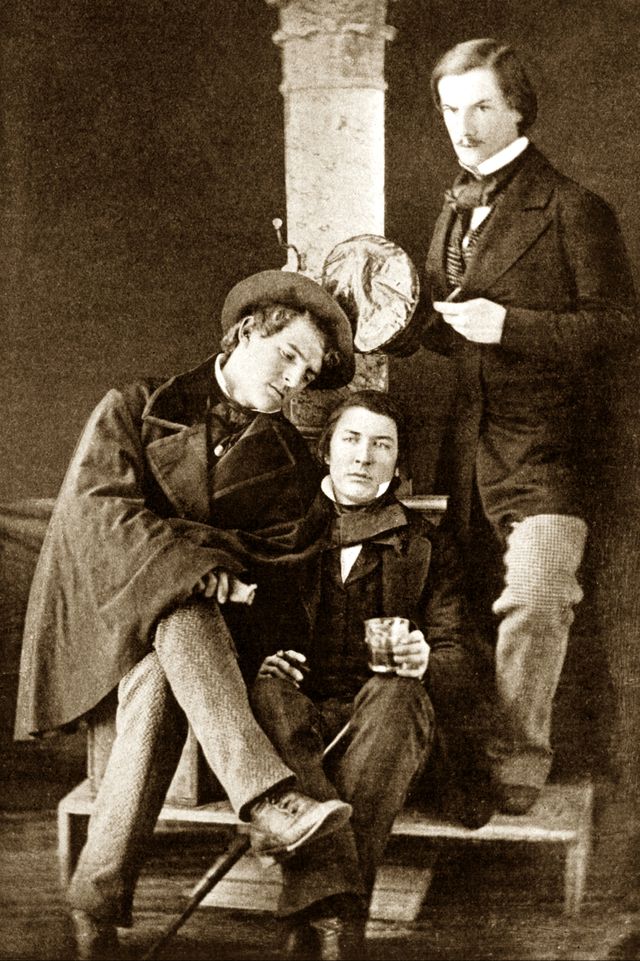
Money was also an issue between Poe and John. Poe went to the University of Virginia in 1826, where he excelled in his classes. However, he didn’t receive enough money from John to cover all of his costs. Poe turned to gambling to cover the difference but ended up in debt.
He returned home only to face another personal setback—his neighbor and fiancée Sarah Elmira Royster had become engaged to someone else. Heartbroken and frustrated, Poe moved to Boston.
In 1827, around the time he published his first book, Poe joined the U.S. Army. Two years later, he learned that his mother, Frances, was dying of tuberculosis, but by the time he returned to Richmond, she had already died.
While in Virginia, Poe and his father briefly made peace with each other, and John helped Poe get an appointment to the United States Military Academy at West Point. Poe excelled at his studies at West Point, but he was kicked out after a year for his poor handling of his duties.
During his time at West Point, Poe had fought with John, who had remarried without telling him. Some have speculated that Poe intentionally sought to be expelled to spite his father, who eventually cut ties with Poe.
After leaving West Point, Poe published his third book and focused on writing full-time. He traveled around in search of opportunity, living in New York City, Baltimore, Philadelphia, and Richmond. In 1834, John Allan died, leaving Poe out of his will, but providing for an illegitimate child Allan had never met.
Poe, who continued to struggle living in poverty, got a break when one of his short stories won a contest in the Baltimore Saturday Visiter . He began to publish more short stories and, in 1835, landed an editorial position with the Southern Literary Messenger in Richmond. Poe developed a reputation as a cut-throat critic, writing vicious reviews of his contemporaries. His scathing critiques earned him the nickname the “Tomahawk Man.”
His tenure at the magazine proved short, however. Poe’s aggressive reviewing style and sometimes combative personality strained his relationship with the publication, and he left the magazine in 1837. His problems with alcohol also played a role in his departure, according to some reports.
Poe went on to brief stints at Burton’s Gentleman’s Magazine , Graham’s Magazine , as well as The Broadway Journal , and he also sold his work to Alexander’s Weekly Messenger , among other journals.
In 1844, Poe moved to New York City. There, he published a news story in The New York Sun about a balloon trip across the Atlantic Ocean that he later revealed to be a hoax. His stunt grabbed attention, but it was his publication of “The Raven,” in 1845, that made Poe a literary sensation.
That same year, Poe found himself under attack for his stinging criticisms of fellow poet Henry Wadsworth Longfellow . Poe claimed that Longfellow, a widely popular literary figure, was a plagiarist, which resulted in a backlash against Poe.
Despite his success and popularity as a writer, Poe continued to struggle financially, and he advocated for higher wages for writers and an international copyright law.
Poe self-published his first book, Tamerlane and Other Poems , in 1827. His second poetry collection, Al Aaraaf, Tamerlane, and Minor Poems , was published in 1829.
As a critic at the Southern Literary Messenger in Richmond from 1835 to 1837, Poe published some of his own works in the magazine, including two parts of his only novel, The Narrative of Arthur Gordon Pym . Later on came poems such as “Ulalume” and “The Bells.”
“The Raven”
Poe’s poem “The Raven,” published in 1845 in the New York Evening Mirror , is considered among the best-known poems in American literature and one of the best of Poe’s career. An unknown narrator laments the demise of his great love Lenore and is visited by a raven, who insistently repeats one word: “Nevermore.” In the work, which consists of 18 six-line stanzas, Poe explored some of his common themes: death and loss.
“Annabel Lee”
This lyric poem again explores Poe’s themes of death and loss and might have been written in memory of his beloved wife, Virginia, who died two years prior its publication. The poem was published on October 9, 1849, two days after Poe’s death, in the New York Tribune .
In late 1830s, Poe published Tales of the Grotesque and Arabesque , a collection of short stories. It contained several of his most spine-tingling tales, including “The Fall of the House of Usher,” “Ligeia,” and “William Wilson.”
In 1841, Poe launched the new genre of detective fiction with “The Murders in the Rue Morgue.” His literary innovations earned him the nickname “Father of the Detective Story.” A writer on the rise, he won a literary prize in 1843 for “The Gold Bug,” a suspenseful tale of secret codes and hunting treasure.
“The Black Cat”
Poe’s short story “The Black Cat” was published in 1843 in The Saturday Evening Post . In it, the narrator, a one-time animal lover, becomes an alcoholic who begins abusing his wife and black cat. By the macabre story’s end, the narrator observes his own descent into madness as he kills his wife, a crime his black cat reports to the police. The story was later included in the 1845 short story collection, Tales by Edgar Allan Poe .
Later in his career, Poe continued to work in different forms, examining his own methodology and writing in general in several essays, including “The Philosophy of Composition,” “The Poetic Principle,” and “The Rationale of Verse.” He also produced the thrilling tale, “The Cask of Amontillado.”
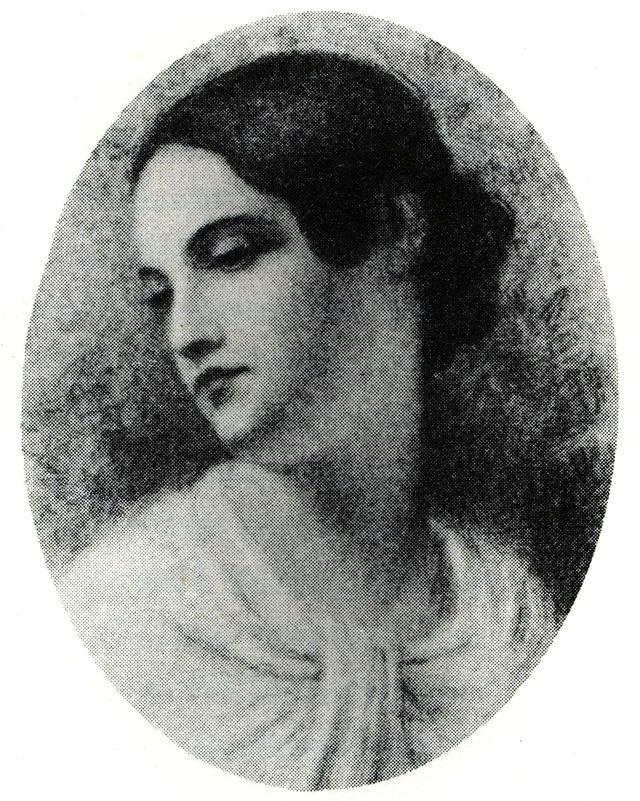
From 1831 to 1835, Poe lived in Baltimore, where his father was born, with his aunt Maria Clemm and her daughter Virginia. He began to devote his attention to Virginia; his cousin became his literary inspiration as well as his love interest. The couple married in 1836 when she was only 13 years old and he was 27.
In 1847, at the age of 24—the same age when Poe’s mother and brother also died—Virginia passed away from tuberculosis. Poe was overcome by grief following her death, and although he continued to work, he suffered from poor health and struggled financially until his death in 1849.
Poe died on October 7, 1849, in Baltimore at age 40.
His final days remain somewhat of a mystery. Poe left Richmond on ten days earlier, on September 27, and was supposedly on his way to Philadelphia. On October 3, he was found in Baltimore in great distress. Poe was taken to Washington College Hospital, where he died four days later. His last words were “Lord, help my poor soul.”
At the time, it was said that Poe died of “congestion of the brain.” But his actual cause of death has been the subject of endless speculation. Some experts believe that alcoholism led to his demise while others offer up alternative theories. Rabies, epilepsy, and carbon monoxide poisoning are just some of the conditions thought to have led to the great writer’s death.
Shortly after his passing, Poe’s reputation was badly damaged by his literary adversary Rufus Griswold. Griswold, who had been sharply criticized by Poe, took his revenge in his obituary of Poe, portraying the gifted yet troubled writer as a mentally deranged drunkard and womanizer. He also penned the first biography of Poe, which helped cement some of these misconceptions in the public’s minds.
Although Poe never had financial success in his lifetime, he has become one of America’s most enduring writers. His works are as compelling today as they were more than a century ago. An innovative and imaginative thinker, Poe crafted stories and poems that still shock, surprise, and move modern readers. His dark work influenced writers including Charles Baudelaire , Fyodor Dostoyevsky, and Stephane Mallarme.
The Baltimore home where Poe stayed from 1831 to 1835 with his aunt Maria Clemm and her daughter, Poe’s cousin and future wife Virginia, is now a museum. The Edgar Allan Poe House offers a self-guided tour featuring exhibits on Poe’s foster parents, his life and death in Baltimore, and the poems and short stories he wrote while living there, as well as memorabilia including his chair and desk.
- The death of a beautiful woman is unquestionably the most poetical topic in the world.
- Lord, help my poor soul.
- Sound loves to revel near a summer night.
- But as, in ethics, evil is a consequence of good, so, in fact, out of joy is sorrow born. Either the memory of past bliss is the anguish of to-day, or the agonies which are have their origin in the ecstasies which might have been.
- They who dream by day are cognizant of many things which escape those who dream only by night.
- The boundaries which divide life from death are at best shadowy and vague. Who shall say where the one ends, and where the other begins?
- With me poetry has been not a purpose, but a passion; and the passions should be held in reverence; they must not—they cannot at will be excited, with an eye to the paltry compensations, or the more paltry commendations, of mankind.
- And now—have I not told you that what you mistake for madness is but over-acuteness of the senses?—now, I say, there came to my ears a low, dull, quick sound, such as a watch makes when enveloped in cotton. I knew that sound well, too. It was the beating of the old man’s heart.
- All that we see or seem is but a dream within a dream.
- I have no faith in human perfectibility. I think that human exertion will have no appreciable effect upon humanity. Man is now only more active—not more happy—nor more wise, than he was 6000 years ago.
- [I]f you wish to forget anything upon the spot, make a note that this thing is to be remembered.
- Beauty of whatever kind, in its supreme development, invariably excites the sensitive soul to tears.

Watch “The Mystery of Edgar Allan Poe” on HISTORY Vault
Fact Check: We strive for accuracy and fairness. If you see something that doesn’t look right, contact us !
The Biography.com staff is a team of people-obsessed and news-hungry editors with decades of collective experience. We have worked as daily newspaper reporters, major national magazine editors, and as editors-in-chief of regional media publications. Among our ranks are book authors and award-winning journalists. Our staff also works with freelance writers, researchers, and other contributors to produce the smart, compelling profiles and articles you see on our site. To meet the team, visit our About Us page: https://www.biography.com/about/a43602329/about-us

William Shakespeare

How Did Shakespeare Die?

Christine de Pisan

Sor Juana Inés de la Cruz

14 Hispanic Women Who Have Made History

10 Famous Langston Hughes Poems

5 Crowning Achievements of Maya Angelou

Amanda Gorman

Langston Hughes

7 Facts About Literary Icon Langston Hughes

Maya Angelou
- National Poetry Month
- Materials for Teachers
- Literary Seminars
- American Poets Magazine
Main navigation
- Academy of American Poets
User account menu

Search more than 3,000 biographies of contemporary and classic poets.
Page submenu block
- literary seminars
- materials for teachers
- poetry near you
Edgar Allan Poe
Edgar Allan Poe was born on January 19, 1809, in Boston. Poe’s father and mother, both professional actors, died before the poet was three years old, and John and Frances Allan raised him as a foster child in Richmond, Virginia. John Allan, a prosperous tobacco exporter, sent Poe to the best boarding schools and, later, to the University of Virginia, where Poe excelled academically. After less than one year of school, however, he was forced to leave the university when Allan refused to pay Poe’s gambling debts.
Poe returned briefly to Richmond, but his relationship with Allan deteriorated. In 1827, Poe moved to Boston and enlisted in the United States Army. His first collection of poems, Tamerlane, and Other Poems (George Redway), was published that year. In 1829, he published a second collection entitled Al Aaraaf, Tamerlane, and Minor Poems (Hatch & Dunning). Neither volume received significant critical or public attention. Following his Army service, Poe was admitted to the United States Military Academy, but he was again forced to leave for lack of financial support. He then moved into the home of his aunt Maria Clemm and her daughter, Virginia, in Baltimore.
Poe began to sell short stories to magazines at around this time, and, in 1835, he became the editor of the Southern Literary Messenger in Richmond, where he moved with his aunt and cousin Virginia. In 1836, he married Virginia, who was thirteen years old at the time. Over the next ten years, Poe would edit a number of literary journals including the Burton’s Gentleman’s Magazine and Graham’s Magazine in Philadelphia and the Broadway Journal in New York City. It was during these years that he established himself as a poet, a short story writer, and an editor. He published some of his best-known stories and poems, including “The Fall of the House of Usher,” “The Tell-Tale Heart,” “The Murders in the Rue Morgue,” and “The Raven.” After Virginia’s death from tuberculosis in 1847, Poe’s lifelong struggle with depression and alcoholism worsened. He returned briefly to Richmond in 1849 and then set out for an editing job in Philadelphia. For unknown reasons, he stopped in Baltimore. On October 3, 1849, he was found in a state of semi-consciousness. Poe died four days later of “acute congestion of the brain.” Evidence by medical practitioners who reopened the case has shown that Poe may have been suffering from rabies.
Poe’s work as an editor, poet, and critic had a profound impact on American and international literature. His stories mark him as one of the originators of both horror and detective fiction. Many anthologies credit him as the “architect” of the modern short story. He was also one of the first critics to focus primarily on the effect of style and structure in a literary work; as such, he has been seen as a forerunner to the “art for art’s sake” movement. French Symbolists such as Stéphane Mallarmé and Arthur Rimbaud claimed him as a literary precursor. Charles Baudelaire spent nearly fourteen years translating Poe into French. Today, Poe is remembered as one of the first American writers to become a major figure in world literature.
Related Poets
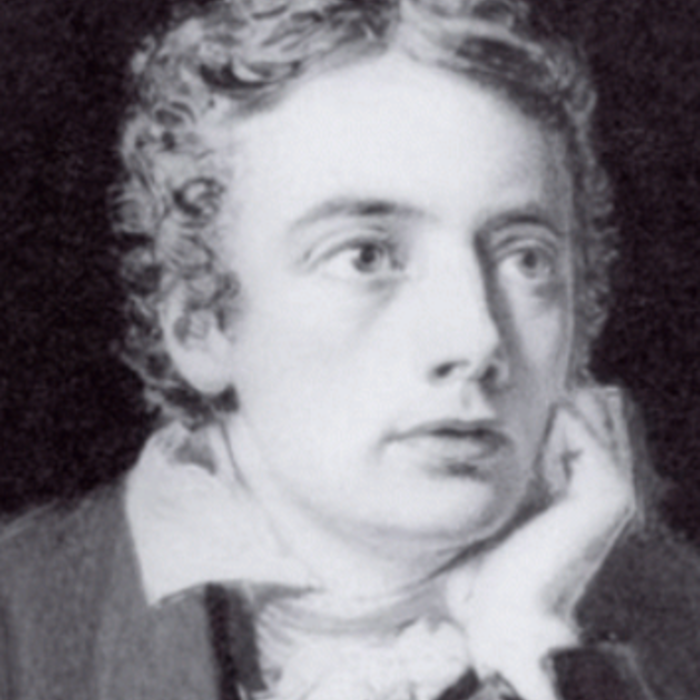
William Wordsworth
William Wordsworth, who rallied for “common speech” within poems and argued against the poetic biases of the period, wrote some of the most influential poetry in Western literature, including his most famous work, The Prelude , which is often considered to be the crowning achievement of English romanticism.
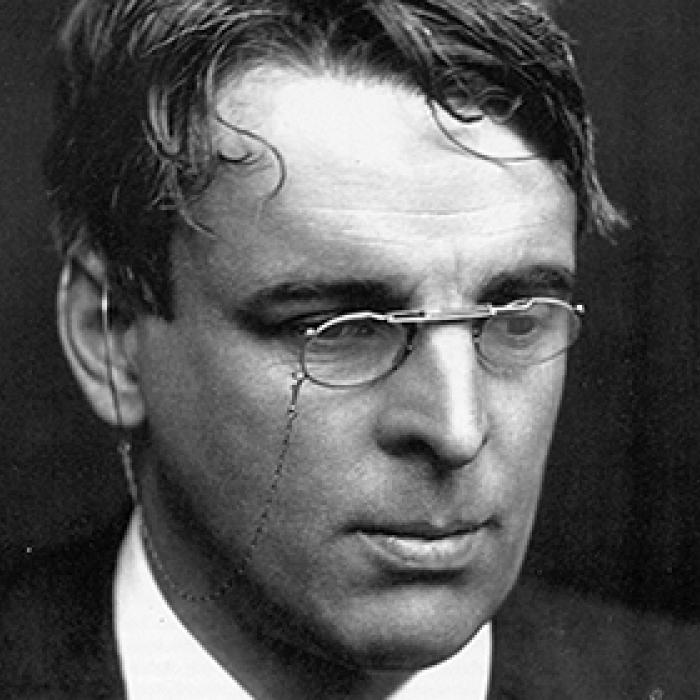
W. B. Yeats
William Butler Yeats, widely considered one of the greatest poets of the English language, received the 1923 Nobel Prize for Literature. His work was greatly influenced by the heritage and politics of Ireland.
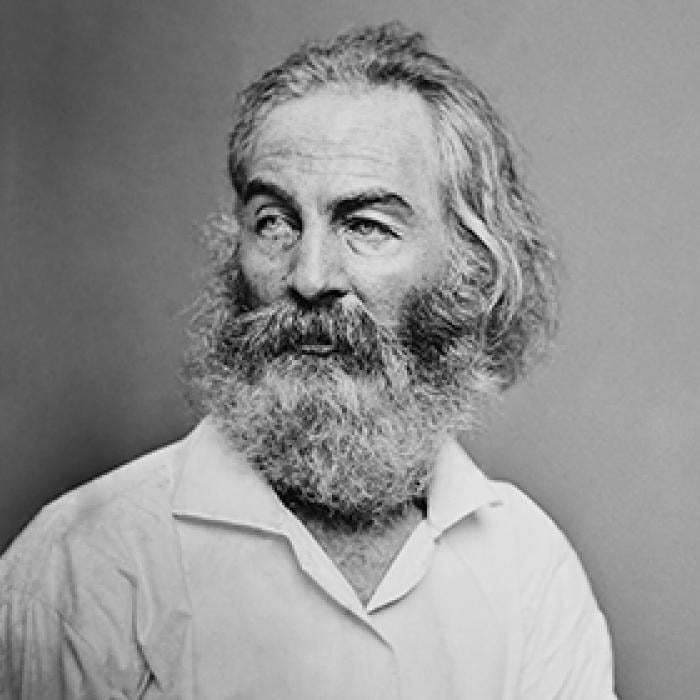
Walt Whitman
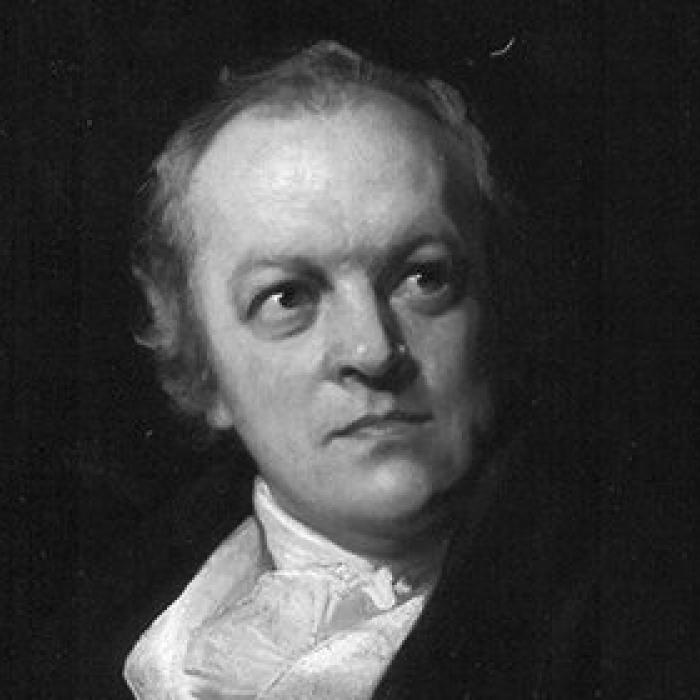
William Blake
William Blake was born in London on November 28, 1757, to James, a hosier, and Catherine Blake. Two of his six siblings died in infancy. From early childhood, Blake spoke of having visions—at four he saw God "put his head to the window"; around age nine, while walking through the countryside, he saw a tree filled with angels.
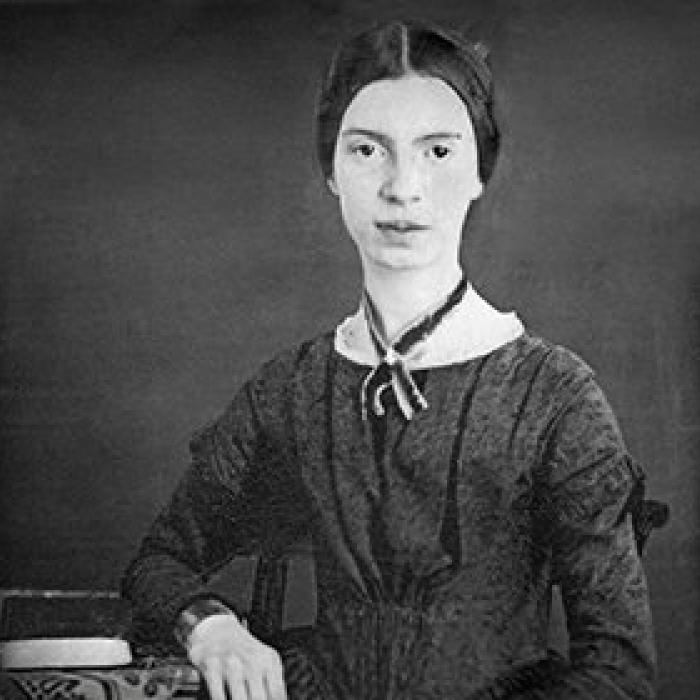
Emily Dickinson
Emily Dickinson was born on December 10, 1830, in Amherst, Massachusetts. While she was extremely prolific as a poet and regularly enclosed poems in letters to friends, she was not publicly recognized during her lifetime. She died in Amherst in 1886, and the first volume of her work was published posthumously in 1890.
Newsletter Sign Up
- Academy of American Poets Newsletter
- Academy of American Poets Educator Newsletter
- Teach This Poem
Encyclopedia Virginia, Virginia Humanities

Edgar Allan Poe (1809–1849)
Edgar Allan Poe was a poet, short story writer, editor, and critic. Credited by many scholars as the inventor of the detective genre in fiction, he was a master at using elements of mystery, psychological terror, and the macabre in his writing. His most famous poem, “The Raven” (1845), combines his penchant for suspense with some of the most famous lines in American poetry. While editor of the Richmond-based Southern Literary Messenger , Poe carved out a philosophy of poetry that emphasized brevity and beauty for its own sake. Stories, he wrote, should be crafted to convey a single, unified impression, and for Poe, that impression was most often dread. “The Tell-Tale Heart” (1843), for instance, memorably describes the paranoia of its narrator, who is guilty of murder. After leaving Richmond, Poe lived and worked in Philadelphia, Pennsylvania, and New York, seeming to collect literary enemies wherever he went. Incensed by his especially sharp, often sarcastic style of criticism, they were not inclined to help Poe as his life unraveled because of sickness and poverty. After Poe’s death at the age of forty, a former colleague, Rufus W. Griswold, wrote a scathing biography that contributed, in the years to come, to a literary caricature. Poe’s poetry and prose, however, have endured.
Early Years

Edgar Poe was born on January 19, 1809, in Boston, to traveling actors David Poe Jr. (a Baltimore, Maryland, native) and Elizabeth Arnold Hopkins (an emigrant from England). Poe was the couple’s second of three children. His brother, William Henry Leonard Poe, was born in 1807, and his sister, Rosalie Poe, was born in 1810. On December 8, 1811, when Poe was just two years old, his mother died in Richmond. His father, who had left the family in 1810, died of unknown circumstances. Henry, as William Henry Leonard was known, lived with his grandparents in Baltimore, while Rosalie and Edgar remained in Richmond. William and Jane Mackenzie adopted Rosalie, and Edgar became the foster son of John and Frances Allan. Poe received his middle name from his foster parents.
In 1815 Allan, a tobacco merchant, moved with his wife and foster son to England in an attempt to improve his business interests there. Poe attended school in Chelsea until 1820, when the family returned to Richmond. John Allan had always hoped that Poe would join his own mercantile firm, but Poe was determined to become a writer and, in particular, a poet. In 1826, he attended the University of Virginia in Charlottesville. Although he distinguished himself academically, Allan denied him financial support after less than a year because of Poe’s gambling debts and what Allan perceived to be his ward’s lack of direction. Without money, Poe returned briefly to Richmond, only to find that his fiancée, Sarah Elmira Royster, under the direction of her family, had married an older and wealthier suitor, Alexander Shelton.
Disheartened and penniless, Poe left Richmond for Boston where, using the name “A Bostonian,” he authored Tamerlane and other Poems (1827), a collection of seven brief, lyrical poems. In particular, “The Lake” employs what would become typical Poe-esque symbolism, with calm waters representing the speaker’s repressed emotions, always threatening to dangerously swell. The book’s sales were negligible.

Still unable to support himself, Poe enlisted in the United States Army on May 26, 1827, under the pseudonym “Edgar A. Perry.” (He was eighteen at the time but claimed to be twenty-two.) During his military service, he was stationed at Fort Moultrie on Sullivan’s Island in Charleston, South Carolina—a site he would later appropriate as the setting for his story, “The Gold Bug”—and then at Fort Monroe in Hampton, Virginia. On February 28, 1829, while Poe was in Virginia, his foster mother, Frances Allan, died.
Despite having been promoted to sergeant major, Poe became dissatisfied with army life and appealed to his foster father for help in releasing him from his five-year commitment. In a December 1, 1828, letter to Allan, Poe worried that “the prime of my life would be wasted” in the army and threatened “more decided measures if you refuse to assist me.” During this tumultuous period, Poe compiled a second collection of verse, Al Aaraaf, Tamerlane and Minor Poems (1829), but it, too, received little attention. Critics described the poems in terms ranging from “incoherent” to “beautiful and enduring.”
With Allan’s help, Poe left the army and was admitted to the United States Military Academy at West Point, which he attended from 1830 until 1831. Poe thrived academically, but again experienced financial problems, this time running afoul of both his foster father and school officials. Expelled from West Point and disowned by Allan, Poe traveled to Baltimore to reside with his aunt, Maria Clemm, and her young daughter, Virginia. The events of Poe’s life from 1831 until 1833 remain relatively obscure.
Out of Obscurity
While living in Baltimore, Poe turned in earnest to his literary efforts. His third volume of verse, Poems (1831), hints at the Gothic sensibility—in particular, a preoccupation with death and psychological instability—that would become his trademark. For instance, “Irene” (revised as “The Sleeper”) features a distraught young man who, at midnight, mourns over his lover’s corpse: “Strange is thy pallor! strange thy dress, / Strange above all, thy length of tress, / And this all solemn silentness!” Poe received some help and encouragement from the literary editor and critic John Neal, but his poems continued to attract scant notice.
In an effort to improve his financial position, Poe turned to fiction. Because they sold the best, he wrote mostly Gothic-style horror and suspense stories and, in 1831, entered five of them in a contest sponsored by the weekly newspaper, the Philadelphia Saturday Courier . Although he won no prize, the tales were published anonymously during 1832. In October 1833, Poe’s story “MS. Found in a Bottle”—about a midnight accident at sea and a mysterious ship that appears out of the “watery hell”—won a competition sponsored by the Baltimore Saturday Visiter . His poem “The Coliseum” would have been awarded best poem, as well, but the judges preferred not to offer both prizes to a single author.

One of the competition’s judges was John Pendleton Kennedy, a Whig Party politician, literary editor, and author of Swallow Barn, or a Sojourn in the Old Dominion (1832). In 1835, Kennedy encouraged Poe to apply for an assistant editor position at the Southern Literary Messenger , a Richmond-based magazine founded the previous year by Thomas Willis White. Poe received the job and was soon promoted to editor despite clashing with White over his—Poe’s—excessive drinking.
In May 1836, for the first time feeling financially secure enough to marry, Poe wed his thirteen-year-old cousin, Virginia Clemm. Historians disagree over whether they consummated their marriage. Virginia’s mother, Poe’s aunt, kept house for the couple and continued to do so for Poe after Virginia’s death.
Poe’s work at the Messenger helped him climb out of literary obscurity. Under his direction, the journal’s circulation increased and Poe began to develop contacts with the northern literary establishment. He turned these successes to his advantage, publishing revised versions of his own stories and poems. Still, he became best known for his caustic literary criticism, such as a December 1835 review of Theodore S. Fay’s novel, Norman Leslie : “We do not mean to say that there is positively nothing in Mr. Fay’s novel to commend—but there is indeed very little.” And about Morris Mattson’s Paul Ulric , he wrote, in February 1836: “When we called Norman Leslie the silliest book in the world we had certainly never seen Paul Ulric .”
That Fay was a darling of the New York literary establishment helped provoke a long-running feud between Poe and Lewis Gaylord Clark, editor of New York City’s Knickerbocker Magazine and an ardent defender of northern literary sensibilities. Poe and Clark insulted one another in print for years, with Clark, in 1845, calling Poe “‘nothing if not critical,’ and even less than nothing at that.”
A New Literary Sensibility
Poe’s sharp-tongued criticisms may have won him lifelong enemies, but they also served to articulate an important new literary sensibility. Poems should be short, he argued, and poems should be beautiful. In his “Letter to Mr. B—,” published in the Messenger (July 1836), Poe mocks William Wordsworth for his “long wordy discussions by which he tries to reason us into admiration of his poetry,” and then, after quoting the poet on the subject of a “snow-white mountain lamb,” sarcastically rejoinders: “Now, we have no doubt this is all true: we will believe it, indeed we will, Mr. W. Is it sympathy for the sheep you wish to excite? I love a sheep from the bottom of my heart.”
True literature, meanwhile, should celebrate beauty for its own sake and not be burdened with the sort of purposefulness one might find in a Sunday morning sermon. Here, Poe both echoes Nathaniel Hawthorne—who famously complained of those inclined “relentlessly to impale the story with its moral, as with an iron rod”—and pokes fun at his Puritan sensibilities: “I see no reason, then, why our metaphysical poets should plume themselves so much on the utility of their works, unless indeed they refer to instruction with eternity in view; in which case, sincere respect for their piety would not allow me to express contempt for their judgment … ”
“The Tell-Tale Heart” Over the years, Poe also argued that the short story was the supreme form in fiction, meant to be tightly constructed and convey a single, unified impression. In Poe’s case, that impression was most often fear, foreboding, and dread, as evidenced in short stories like “The Cask of Amontillado” (1846), which describes an excruciatingly slow plan of revenge. And for such unified impressions to take hold, brevity—a term Poe calculated to mean a work that took no longer than ninety minutes to read—was crucial. “As the novel cannot be read at one sitting,” he wrote in 1842 in an admiring review of a Hawthorne collection, “it cannot avail itself of the immense benefit of totality . Worldly interests, intervening during the pauses of perusals, modify, counteract and annul the impressions intended.”
Poe did not limit his fiction to Gothic tales, however. From 1833 until 1836, he attempted and failed to find a publisher for his collection of satirical stories, Tales of the Folio Club . In the book, club members meet monthly to critique each other’s stories, all of which turn out to be caricatures of the styles of popular writers from Poe’s day. His critical ax never dull, Poe still managed to place a number of the stories in journals such as the Messenger and the Philadelphia Saturday Courier .
After Richmond

After years of battling the northern literary elite, Poe left the Messenger in January 1837 and moved north himself, working in various editorial posts, most notably at Graham’s Magazine in Philadelphia. Sometime between November 1839 and January 1840, his two-volume collection Tales of the Grotesque and Arabesque was published, providing a broader audience to many of his previously published stories. In stories such as “The Fall of the House of Usher,” Poe rebutted charges of “Germanism and gloom,” Germany being a preferred literary source for his Gothic sensibility. “If in many of my productions terror has been the thesis,” he wrote, “I maintain that terror is not of Germany but of the soul—”
His famous opening to “Usher” suggests that he more than walked the walk of his literary philosophy, expertly compressing Teutonic gloom into a single storm cloud of a sentence: “During the whole of a dull, dark, and soundless day in the autumn of the year, when the clouds hung oppressively low in the heavens, I had been passing alone, on horseback, through a singularly dreary tract of country; and at length found myself, as the shades of evening drew on, within view of the melancholy House of Usher.”
Graham’s , meanwhile, featured some of Poe’s most assertive original fiction. In “The Murders in the Rue Morgue” (April 1841), for instance, Poe introduced the detective story prototype that Sir Arthur Conan Doyle would make so famous with his Sherlock Holmes episodes: an uncannily observant detective solves the crime while accompanied by his friend, who also narrates the events. In “The Masque of the Red Death” (May 1842), Poe traded the hyper-logic of detectives for the psychological horror of disease and inevitable death, describing a masquerade ball set in a plague-stricken Italian castle.
Later Years
By 1844, Poe had relocated to New York, home of any number of his most bitter literary enemies and where he became the editor and then owner of the literary weekly, Broadway Journal . In January 1845, the New York Evening Mirror published his poem, “The Raven,” a disturbing account of its grief-stricken narrator’s encounter with a bird that knows but one word: “Nevermore.” The poem’s opening lines— “Once upon a midnight dreary, while I pondered, weak and weary / Over many a quaint and curious volume of forgotten lore,”—are among the most famous in the English language and brought Poe wide and almost instant acclaim. Nevertheless, they failed to deliver him from his persistent financial troubles.
Nor did Poe’s unpredictable moods and pugilistic criticism help him make friends in literary circles. In October 1845, he annoyed a Boston audience prepared for a talk about poetry by instead reciting his long and obscure poem “Al Aaraaf.” He continued to lampoon in print his fellow writers, including Thomas Dunn English, whom he worked with in Philadelphia. Some critics have even suggested that Poe used his feud with English as motivation for his revenge fantasy in “The Cask of Amontillado.”

When Broadway Journal went under in January 1846, Poe lost the most reliable venue for his attacks. And having alienated so many of his fellow writers and editors, he found it difficult to publish and, therefore, to make money. Then, in January 1847, his wife Virginia died of tuberculosis, sending Poe into bouts of depression and torturous grief, during which he reportedly sought the comforts of alcohol. Some historians have speculated that his alcohol use was complicated by either diabetes or hypoglycemia, which would have resulted in violent mood swings. This, in turn, might help to explain later portraits of Poe—in particular from the pen of Rufus W. Griswold, who had succeeded him as editor at Graham’s —as an irreclaimable alcoholic.
In 1849, Poe traveled to Richmond to read his poetry and lecture on “The Philosophy of Composition,” which had been published in the April 1846 issue of Graham’s as a critical explication of his writing of “The Raven.” While there, he reunited with his one-time fiancée, Elmira Shelton, who was now widowed and wealthy. Poe decided to marry her and move to Richmond, and late in September departed for Fordham, New York, where he would arrange to move his aunt Maria to Virginia.
Edgar Allan Poe (Audio) The move never happened, however. A few weeks later, Poe was found unconscious and dangerously ill outside a Baltimore tavern. He died in the hospital on October 7, 1849, and received a swift burial in his grandfather Poe’s cemetery lot in the Westminster Presbyterian Church Cemetery in Baltimore. Historians have long disagreed about the exact cause of his death, suggesting everything from rabies to alcoholism.
Poe had given Griswold a memorandum from which to write a biography of him, but the editor’s use of this work was distinctly unflattering—even treacherous. Griswold quickly produced a polemic obituary and soon after undertook to publish a multivolume edition of Poe’s writings, The Works of the Late Edgar Allan Poe (1850–1856) , as well as an unjust and inflammatory fifty-page memoir detailing Poe’s life. This sketch, subsequently used by many later biographers, helped in part to create the caricature of Poe that has survived in American literary legend—as a death-obsessed, drug-addled debaucher.
Poe’s room on the West Range at the University of Virginia is open for viewing by the public. In Richmond, the Poe Museum, which first opened in 1922, features a large collection of the writer’s manuscripts, letters, first editions, and personal belongings.
Major Works
- Tamerlane and Other Poems: By a Bostonian (1827)
- Al Aaraaf, Tamerlane, and Minor Poems (1829)
- Poems, By Edgar A. Poe (1831)
- The Narrative of Arthur Gordon Pym, of Nantucket (short novel, 1838)
- Tales of the Grotesque and Arabesque (1840)
- Prose Romances: The Murders in the Rue Morgue and The Man That Was Used Up (1843)
- The Raven and Other Poems (1845)
- Tales (1845)
- Eureka: A Prose Poem (1848)
- The Literati (1850)
- Politan: An Unfinished Tragedy (1923)
The Poe Museum
The Edgar Allan Poe Society of Baltimore
University of Virginia Library Electronic Text Center
The Poe Studies Association
- Antebellum Period (1820–1860)
- Fisher, Benjamin F. Ed. Poe and His Times: The Artist in His Milieu. Baltimore: The Edgar Allan Poe Society, 1990.
- Hayes, Kevin J., ed. The Cambridge Companion to Edgar Allan Poe . Cambridge: Cambridge University Press, 2002.
- Quinn, Arthur Hobson. Edgar Allan Poe: A Critical Biography . New York: Appleton-Century, 1941; reprinted with a new foreword by Shawn Rosenheim. Baltimore: Johns Hopkins University Press, 1998.
- Thomas, Dwight, and David K. Jackson. The Poe Log: A Documentary Life of Edgar Allan Poe 1809–1849 . Boston: G. K. Hall, 1987.
- Wagenknecht, Edward. Edgar Allan Poe: The Man Behind the Legend. New York: Oxford University Press, 1963.
- Name First Last
- Name This field is for validation purposes and should be left unchanged.
Never Miss an Update
Partners & affiliates.
Encyclopedia Virginia 946 Grady Ave. Ste. 100 Charlottesville, VA 22903 (434) 924-3296
Indigenous Acknowledgment
Virginia Humanities acknowledges the Monacan Nation , the original people of the land and waters of our home in Charlottesville, Virginia.
We invite you to learn more about Indians in Virginia in our Encyclopedia Virginia .

- Movies & TV
- Featured Categories
- Special Interests
Buy new: #buybox .a-accordion .a-accordion-active .a-price[data-a-size=l].reinventPriceAccordionT2 .a-price-whole { font-size: 28px !important; } #buybox .a-accordion .a-accordion-active .a-price[data-a-size=l].reinventPriceAccordionT2 .a-price-fraction, #buybox .a-accordion .a-accordion-active .a-price[data-a-size=l].reinventPriceAccordionT2 .a-price-symbol { top: -0.75em; font-size: 13px; } $20.81 $ 20 . 81 FREE delivery: May 3 - 6 Ships from: i-Deals Store Sold by: i-Deals Store
Save with used - like new #buybox .a-accordion .a-accordion-active .a-price[data-a-size=l].reinventpriceaccordiont2 .a-price-whole { font-size: 28px important; } #buybox .a-accordion .a-accordion-active .a-price[data-a-size=l].reinventpriceaccordiont2 .a-price-fraction, #buybox .a-accordion .a-accordion-active .a-price[data-a-size=l].reinventpriceaccordiont2 .a-price-symbol { top: -0.75em; font-size: 13px; } $16.82 $ 16 . 82 $3.99 delivery: may 2 - 3 ships from: -importcds sold by: -importcds, image unavailable.

- Sorry, this item is not available in
- Image not available
- To view this video download Flash Player

Biography -- Biography The Mystery Of Edgar Allen Poe
Purchase options and add-ons, product description.
Descend into the dark world and tragic life of the melancholy author who is the uncontested master of the macabre, and hear excerpts from his famous works.
Product details
- Aspect Ratio : 1.33:1
- Product Dimensions : 7.5 x 5.5 x 0.5 inches; 2.4 ounces
- Item model number : B001BXNAA2
- Media Format : NTSC
- Run time : 50 minutes
- Release date : April 7, 2010
- Producers : Greystone
- Studio : A&E Television Networks
- ASIN : B001BXNAA2
- Number of discs : 1
- #13,645 in Special Interests (Movies & TV)
Customer reviews
Customer Reviews, including Product Star Ratings help customers to learn more about the product and decide whether it is the right product for them.
To calculate the overall star rating and percentage breakdown by star, we don’t use a simple average. Instead, our system considers things like how recent a review is and if the reviewer bought the item on Amazon. It also analyzed reviews to verify trustworthiness.
- Sort reviews by Top reviews Most recent Top reviews
Top reviews from the United States
There was a problem filtering reviews right now. please try again later..
- Amazon Newsletter
- About Amazon
- Accessibility
- Sustainability
- Press Center
- Investor Relations
- Amazon Devices
- Amazon Science
- Sell on Amazon
- Sell apps on Amazon
- Supply to Amazon
- Protect & Build Your Brand
- Become an Affiliate
- Become a Delivery Driver
- Start a Package Delivery Business
- Advertise Your Products
- Self-Publish with Us
- Become an Amazon Hub Partner
- › See More Ways to Make Money
- Amazon Visa
- Amazon Store Card
- Amazon Secured Card
- Amazon Business Card
- Shop with Points
- Credit Card Marketplace
- Reload Your Balance
- Amazon Currency Converter
- Your Account
- Your Orders
- Shipping Rates & Policies
- Amazon Prime
- Returns & Replacements
- Manage Your Content and Devices
- Recalls and Product Safety Alerts
- Conditions of Use
- Privacy Notice
- Consumer Health Data Privacy Disclosure
- Your Ads Privacy Choices
- Subject List
- Take a Tour
- For Authors
- Subscriber Services
- Publications
- African American Studies
- African Studies
American Literature
- Anthropology
- Architecture Planning and Preservation
- Art History
- Atlantic History
- Biblical Studies
- British and Irish Literature
- Childhood Studies
- Chinese Studies
- Cinema and Media Studies
- Communication
- Criminology
- Environmental Science
- Evolutionary Biology
- International Law
- International Relations
- Islamic Studies
- Jewish Studies
- Latin American Studies
- Latino Studies
- Linguistics
- Literary and Critical Theory
- Medieval Studies
- Military History
- Political Science
- Public Health
- Renaissance and Reformation
- Social Work
- Urban Studies
- Victorian Literature
- Browse All Subjects
How to Subscribe
- Free Trials
In This Article Expand or collapse the "in this article" section Edgar Allan Poe
Introduction, general overviews.
- General Editions
- Specific Editions
- Facsimile Editions
- Teaching Editions
- Bibliographies
- Poe’s Family
- Personal Reminiscences
- Correspondence
- Race and Gender
- Collections
- The Narrative of Arthur Gordon Pym
- Critical Essays and Reviews
- Film and Theater
- Poe Illustration
- Poe and Print Culture
- Poe and Other Writers
- Poe and the Visual Arts
Related Articles Expand or collapse the "related articles" section about
About related articles close popup.
Lorem Ipsum Sit Dolor Amet
Vestibulum ante ipsum primis in faucibus orci luctus et ultrices posuere cubilia Curae; Aliquam ligula odio, euismod ut aliquam et, vestibulum nec risus. Nulla viverra, arcu et iaculis consequat, justo diam ornare tellus, semper ultrices tellus nunc eu tellus.
- American Literary Biography
- "American Renaissance"
- Charles Brockden Brown
- Herman Melville
- Nathaniel Hawthorne
- Sentimentalism and Domestic Fiction
- William Maxwell
Other Subject Areas
Forthcoming articles expand or collapse the "forthcoming articles" section.
- Lorraine Hansberry
- Mary Boykin Chesnut
- Phillis Wheatley Peters
- Find more forthcoming articles...
- Export Citations
- Share This Facebook LinkedIn Twitter
Edgar Allan Poe by Richard Kopley LAST REVIEWED: 27 October 2016 LAST MODIFIED: 27 October 2016 DOI: 10.1093/obo/9780199827251-0050
Born to a gifted actress and a less talented actor, Edgar Allan Poe (b. 1809–d. 1849) was orphaned in 1811 and taken in by the Allans of Richmond. Over time, tensions with John Allan grew, culminating with young Poe’s withdrawal from the University of Virginia in 1826 for incurring gambling debts and leading to his 1827 voyage to Boston. Poe published Tamerlane and Other Poems (1827), then joined the army, eventually serving as a cadet at West Point, and, after deliberately causing his own court-martial, lived in Baltimore with his aunt Maria Clemm, his cousin Virginia, and his brother, Henry (who died in 1831). Having published Al Aaraaf, Tamerlane, and Minor Poems (1829) and Poems (1831), Poe shifted to fiction, and in 1835 he became an editor of Richmond’s Southern Literary Messenger . He published short stories, poems, and criticism, and he began to write his novel The Narrative of Arthur Gordon Pym . Owing to his drinking, however, he lost his job in 1837 and ventured, with his new wife, Virginia, and his aunt (now his mother-in-law), to New York City—where he published Pym (1838)—and then to Philadelphia. In 1842 Virginia developed tuberculosis, his drinking intensified, and his poverty continued—indeed, he declared bankruptcy late that year. Yet, also during the Philadelphia period, he served as a magazine editor and wrote some of his greatest stories. His collection Tales of the Grotesque and Arabesque was published in 1840, and he soon thereafter created the modern detective story. In 1844 Poe and his family moved to New York City, where he achieved his greatest fame with “The Raven” in 1845. Also, he published The Raven and Other Poems (1845) and Tales (1845). But his drinking interfered with his editing the Broadway Journal , and he became involved in literary and legal conflicts. He and his family moved to Fordham, and Virginia died there in January 1847. In 1848 he published his cosmological prose-poem, Eureka , and in 1849 he returned to Richmond and became engaged to a wealthy widow, Elmira Royster Shelton, whom he had known in his youth. But he clearly was unhappy with the arrangement. Exactly what happened in Baltimore is not known, but on 3 October 1849 he was found inebriated and “rather the worse for wear”; he died in the Washington College Hospital four days later. Rufus Griswold, his literary executor, wrote an infamously hostile obituary, from which Poe’s reputation has never fully recovered. Certainly, Poe had his share of mortal frailties, but he also created immortal works of literature.
A wide variety of full-length studies of Poe are available; a selection is offered here. The introductory works are Fisher 2008 , Hammond 1983 , Hayes 2009 , and Symons 1978 . All are written with ease, brevity, and clarity. The most rewarding for the new student of Poe is surely Fisher 2008 . The ambitious full-length studies are Allen 1934 , Hoffman 1972 , Quinn 1998 , and Silverman 1991 . For the authority of its research, Silverman 1991 is clearly the book to read. But Hoffman 1972 , with its lively, idiosyncratic interpretation of Poe’s writings, is a delight. And Allen 1934 and Quinn 1998 furnish important and interesting foundational work, which helped shape decades of Poe studies.
Allen, Hervey. Israfel: The Life and Times of Edgar Allan Poe . New York: Farrar & Rinehart, 1934.
If its prose is sometimes a bit overheated and the detail occasionally imagined, this volume, which updates and corrects the two-volume 1926 version, is still a worthwhile, spirited, and engaging presentation of Poe’s life.
Fisher, Benjamin F. The Cambridge Introduction to Edgar Allan Poe . Cambridge, UK: Cambridge University Press, 2008.
DOI: 10.1017/CBO9780511816888
Slender, clear, even-handed, accessible introduction to Poe. This is a very good place to start for its brief and cogent considerations of his life, his context, his work, and its reception.
Hammond, J. R. The Edgar Allan Poe Companion . London: Macmillan, 1983.
A convenient introduction, featuring a brief biography, an analysis of his works in various genres, and handy orienting tools—a Poe dictionary and a listing of people and places in Poe’s works.
Hayes, Kevin J. Edgar Allan Poe . London: Reaktion, 2009.
This brief, recent account of Poe’s life opens with his influence and his participation in literary contests and then takes a more traditional chronological trajectory. The attitude conveyed is a mixture of pity and admiration.
Hoffman, Daniel. Poe Poe Poe Poe Poe Poe Poe . 1st ed. Garden City, NY: Doubleday, 1972.
Lively, personal, compelling study of Poe and his works, written con brio . The author offers a series of jaunty and provocative close readings with attention to a range of matters, from the hoaxical to the heroic.
Quinn, Arthur Hobson. Edgar Allan Poe: A Critical Biography . Foreword by Shawn Rosenheim. Baltimore: Johns Hopkins University Press, 1998.
The classic biography of Poe, written with ample research and evident affection. It includes a generous sampling of the letters and a deft blending of the life and the work. Sympathetic and appreciative, this volume continues to be a substantial contribution. Originally published in 1941.
Silverman, Kenneth. Edgar Allan Poe: Mournful and Never-Ending Remembrance . New York: HarperCollins, 1991.
Thoroughly researched standard biography of Poe, readable and reliable. It ably relates the life to the work but sometimes offers restrained admiration. The approach is psychoanalytic, with a thoughtful emphasis on Poe’s lifelong mourning.
Symons, Julian. The Tell-Tale Heart: The Life and Works of Edgar Allan Poe . New York: Harper & Row, 1978.
This work offers two separate overviews—one of Poe’s life and one of Poe’s works. The writing is straightforward, the interpretation tilted toward the psychoanalytic and without great regard for the academic.
back to top
Users without a subscription are not able to see the full content on this page. Please subscribe or login .
Oxford Bibliographies Online is available by subscription and perpetual access to institutions. For more information or to contact an Oxford Sales Representative click here .
- About American Literature »
- Meet the Editorial Board »
- Adams, Alice
- Adams, Henry
- African American Vernacular Tradition
- Agee, James
- Alcott, Louisa May
- Alexie, Sherman
- Alger, Horatio
- American Exceptionalism
- American Grammars and Usage Guides
- American Literature and Religion
- American Magazines, Early 20th-Century Popular
- American Revolution, Music of the
- Amiri Baraka (LeRoi Jones)
- Anaya, Rudolfo
- Anderson, Sherwood
- Angel Island Poetry
- Antin, Mary
- Anzaldúa, Gloria
- Austin, Mary
- Baldwin, James
- Barlow, Joel
- Barth, John
- Bellamy, Edward
- Bellow, Saul
- Bible and American Literature, The
- Bishop, Elizabeth
- Bourne, Randolph
- Bradford, William
- Bradstreet, Anne
- Brockden Brown, Charles
- Brooks, Van Wyck
- Brown, Sterling
- Brown, William Wells
- Butler, Octavia
- Byrd, William
- Cahan, Abraham
- Callahan, Sophia Alice
- Captivity Narratives
- Cather, Willa
- Cervantes, Lorna Dee
- Chesnutt, Charles Waddell
- Child, Lydia Maria
- Chopin, Kate
- Cisneros, Sandra
- Civil War Literature, 1861–1914
- Clark, Walter Van Tilburg
- Connell, Evan S.
- Cooper, Anna Julia
- Cooper, James Fenimore
- Copyright Laws
- Crane, Stephen
- Creeley, Robert
- Cruz, Sor Juana Inés de la
- Cullen, Countee
- Culture, Mass and Popular
- Davis, Rebecca Harding
- Dawes Severalty Act
- de Burgos, Julia
- de Crèvecœur, J. Hector St. John
- Delany, Samuel R.
- Dick, Philip K.
- Dickinson, Emily
- Doctorow, E. L.
- Douglass, Frederick
- Dreiser, Theodore
- Dubus, Andre
- Dunbar, Paul Laurence
- Dunbar-Nelson, Alice
- Dune and the Dune Series, Frank Herbert’s
- Eastman, Charles
- Eaton, Edith Maude (Sui Sin Far)
- Eaton, Winnifred
- Edwards, Jonathan
- Eliot, T. S.
- Emerson, Ralph Waldo
- Environmental Writing
- Equiano, Olaudah
- Erdrich (Ojibwe), Louise
- Faulkner, William
- Fauset, Jessie
- Federalist Papers, The
- Ferlinghetti, Lawrence
- Fiedler, Leslie
- Fitzgerald, F. Scott
- Frank, Waldo
- Franklin, Benjamin
- Freeman, Mary Wilkins
- Frontier Humor
- Fuller, Margaret
- Gaines, Ernest
- Garland, Hamlin
- Garrison, William Lloyd
- Gibson, William
- Gilman, Charlotte Perkins
- Ginsberg, Allen
- Glasgow, Ellen
- Glaspell, Susan
- González, Jovita
- Graphic Narratives in the U.S.
- Great Awakening(s)
- Griggs, Sutton
- Harper, Frances Ellen Watkins
- Harte, Bret
- Hawthorne, Nathaniel
- Hawthorne, Sophia Peabody
- H.D. (Hilda Doolittle)
- Hellman, Lillian
- Hemingway, Ernest
- Higginson, Ella Rhoads
- Higginson, Thomas Wentworth
- Hughes, Langston
- Indian Removal
- Irving, Washington
- James, Henry
- Jefferson, Thomas
- Jesuit Relations
- Jewett, Sarah Orne
- Johnson, Charles
- Johnson, James Weldon
- Kerouac, Jack
- King, Martin Luther
- Kirkland, Caroline
- Knight, Sarah Kemble
- Larsen, Nella
- Lazarus, Emma
- Le Guin, Ursula K.
- Lewis, Sinclair
- Literary Biography, American
- Literature, Italian-American
- London, Jack
- Longfellow, Henry Wadsworth
- Lost Generation
- Lowell, Amy
- Magazines, Nineteenth-Century American
- Mailer, Norman
- Malamud, Bernard
- Manifest Destiny
- Mather, Cotton
- Maxwell, William
- McCarthy, Cormac
- McCullers, Carson
- McKay, Claude
- McNickle, D'Arcy
- Melville, Herman
- Merrill, James
- Millay, Edna St. Vincent
- Miller, Arthur
- Moore, Marianne
- Morrison, Toni
- Morton, Sarah Wentworth
- Mourning Dove (Syilx Okanagan)
- Mukherjee, Bharati
- Murray, Judith Sargent
- Native American Oral Literatures
- New England “Pilgrim” and “Puritan” Cultures
- New Netherland Literature
- Newspapers, Nineteenth-Century American
- Norris, Zoe Anderson
- Northup, Solomon
- O'Brien, Tim
- Occom, Samson and the Brotherton Indians
- Olsen, Tillie
- Olson, Charles
- Ortiz, Simon
- Paine, Thomas
- Piatt, Sarah
- Pinsky, Robert
- Plath, Sylvia
- Poe, Edgar Allan
- Porter, Katherine Anne
- Proletarian Literature
- Realism and Naturalism
- Reed, Ishmael
- Regionalism
- Rich, Adrienne
- Rivera, Tomás
- Robinson, Kim Stanley
- Roth, Henry
- Roth, Philip
- Rowson, Susanna Haswell
- Ruiz de Burton, María Amparo
- Russ, Joanna
- Sanchez, Sonia
- Schoolcraft, Jane Johnston
- Sexton, Anne
- Silko, Leslie Marmon
- Sinclair, Upton
- Smith, John
- Smith, Lillian
- Spofford, Harriet Prescott
- Stein, Gertrude
- Steinbeck, John
- Stevens, Wallace
- Stoddard, Elizabeth
- Stowe, Harriet Beecher
- Tate, Allen
- Terry Prince, Lucy
- Thoreau, Henry David
- Time Travel
- Tourgée, Albion W.
- Transcendentalism
- Truth, Sojourner
- Twain, Mark
- Tyler, Royall
- Updike, John
- Vallejo, Mariano Guadalupe
- Viramontes, Helena María
- Vizenor, Gerald
- Walker, David
- Walker, Margaret
- War Literature, Vietnam
- Warren, Mercy Otis
- Warren, Robert Penn
- Wells, Ida B.
- Welty, Eudora
- Wendy Rose (Miwok/Hopi)
- Wharton, Edith
- Whitman, Sarah Helen
- Whitman, Walt
- Whitman’s Bohemian New York City
- Whittier, John Greenleaf
- Wideman, John Edgar
- Wigglesworth, Michael
- Williams, Roger
- Williams, Tennessee
- Williams, William Carlos
- Wilson, August
- Winthrop, John
- Wister, Owen
- Woolman, John
- Woolson, Constance Fenimore
- Wright, Richard
- Privacy Policy
- Cookie Policy
- Legal Notice
- Accessibility
Powered by:
- [66.249.64.20|193.7.198.129]
- 193.7.198.129
Want a daily email of lesson plans that span all subjects and age groups?
A refresher on edgar allan poe.
1,116,212 Views
39,526 Questions Answered
Let’s Begin…
Edgar Allan Poe, an American icon, is celebrated for his life and work. This lesson will delve deeper into his early life, his macabre short stories, his poem "The Raven," and his mysterious death in Baltimore in 1849.
About TED-Ed Best of Web
TED-Ed Best of Web are exceptional, user-created lessons that are carefully selected by volunteer teachers and TED-Ed staff.
Meet The Creators
- Video created by Biography
- Lesson Plan created by sarah markel
More from The World's People and Places

The true story behind the legend of the 47 Rōnin
Lesson duration 05:20
321,439 Views

The underground cities of the Byzantine Empire
Lesson duration 05:31
394,310 Views

Is Chandigarh a perfectly planned city?
Lesson duration 05:16
441,339 Views

Why is Texas hold 'em so popular?
Lesson duration 05:43
730,236 Views
- True Crime Blog
- A&E Classics
- A&E Crime Central
- Link A&E on facebook
- Link A&E on twitter
- Link A&E on youtube
- Link A&E on instagram
- Link A&E on tiktok
Biography continues to highlight newsworthy personalities and events with compelling and surprising points-of-view, and remains the defining source for true stories from some of the most accomplished non-fiction storytellers of our time.
Biography Music

Biography: Bobby Brown

Who Killed Tupac?

Biography: KISStory

Biography: The Nine Lives of Ozzy Osbourne

Biography: I Want My MTV

Garth Brooks: The Road I'm On
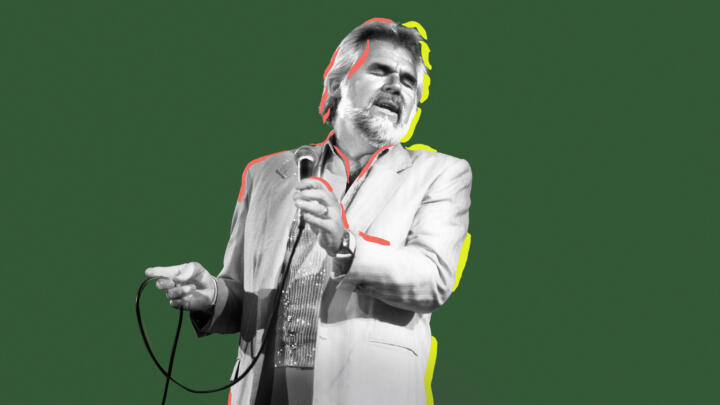
Biography: Kenny Rogers


David Cassidy: The Last Session
Wwe legends: watch now, no sign in required.

Biography: "Stone Cold" Steve Austin

Biography: "Rowdy" Roddy Piper

Biography: "Macho Man" Randy Savage

Biography: Booker T

Biography: Shawn Michaels

Biography: Ultimate Warrior

Biography: Mick Foley

Biography: Bret "Hitman" Hart

WWE's Most Wanted Treasures
Biography specials.

Elizabeth Smart: Autobiography
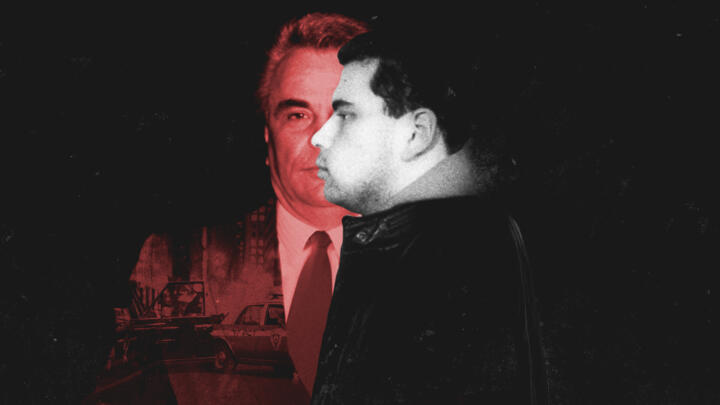
Gotti: Godfather and Son

Farrah Fawcett Forever
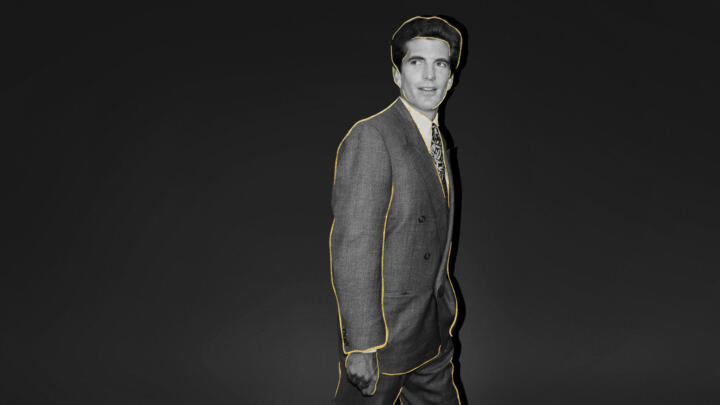
JFK Jr. The Final Year
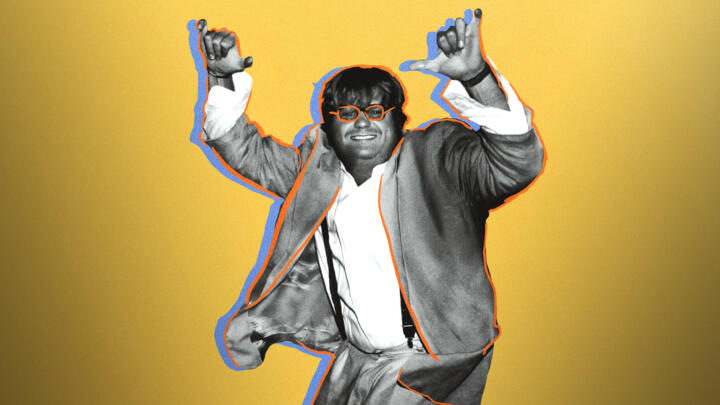
Chris Farley: Anything for a Laugh

Jeff Dunham: Talking Heads

Jeff Foxworthy: Stand Up Guy

Biography: The Trump Dynasty
Biography shorts.

John Cena has branched out into other entertainment, but he'll Never Give Up on the thing that made him a superstar.

Dwayne 'The Rock' Johnson
Learn how a football injury in college turned Dwane Johnson to pro-wrestling.

Pedro Pascal
Pedro Pascal's long road to Hollywood began with an escape from Chile.

Before Gal Gadot got her start as an action star, she trained in the Israeli Army.

Chris Stapleton
Chris Stapleton carries his coal country past with him.

Shania Twain
The story of how Shania Twain got her name plays like a country music ballad.
Biography You Need to Know
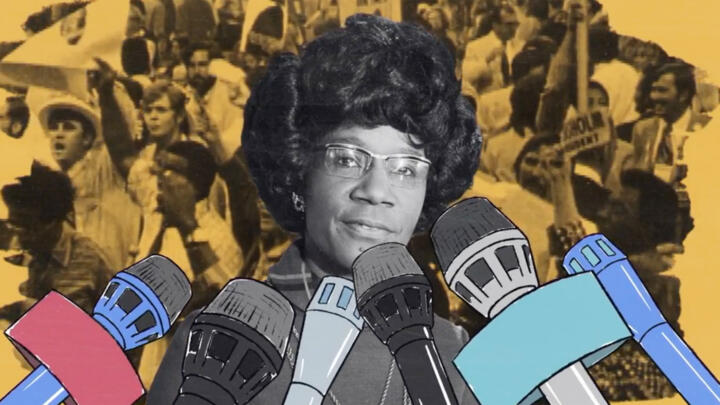
You Need to Know Shirley Chisholm
When she ran for president in 1972, Shirley Chisholm changed the rules of who could be considered presidential material.

You Need to Know Tony Hansberry
A 14-year-old's innovative approach to suturing impacts the lives of women around the world.

You Need to Know Maria Tallchief
America's first prima ballerina danced her way from Oklahoma to the world stage.
Biography Shows

Cultureshock: Freaks and Geeks: The Documentary

Cultureshock: Chris Rock's 'Bring the Pain'
Biography articles.

The Woman Who Stole Freddie Mercury's Heart

Blondie Recorded 'Autoamerican' to Help 'Resolve Racial Tensions' by Crossing Musical Genres

Biography.com
Get instant access to free updates.
Don’t Miss Out on A&E news, behind the scenes content, and more!
- Privacy Notice
- Terms of Use
Need help with the site?
Create a profile to add this show to your list.
poe documentary
All Formats
Resource types, all resource types.
- Rating Count
- Price (Ascending)
- Price (Descending)
- Most Recent
Poe documentary
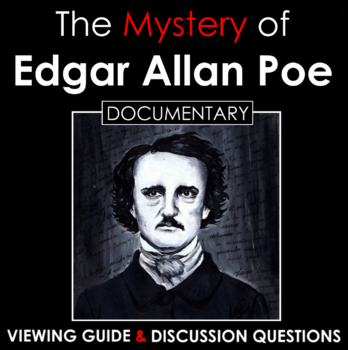
The Mystery of Edgar Allan Poe - A&E Documentary - Viewing Guide & Discussion Qs

Edgar Allan Poe Questions for A & E Biography Documentary -link included (1994)

Edgar Allan Poe Documentary Q's and KEY

- Word Document File

Edgar Allan Poe Documentary Questions

Edgar Allan Poe Documentary Handout

Edgar Allan Poe Interactive Scavenger Hunt (webquest)
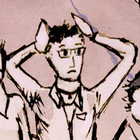
- Google Slides™
- Internet Activities

A&E Biography: The Mystery of Edgar Allan Poe (1994) Questions

A&E Biography of Edgar Allan Poe - Viewing Guide & Discussion Questions

- Google Drive™ folder
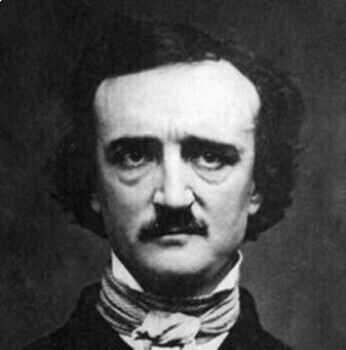
Edgar Allan Poe Notes Guide With Answers/ FREE A & E documentary online

- Google Docs™
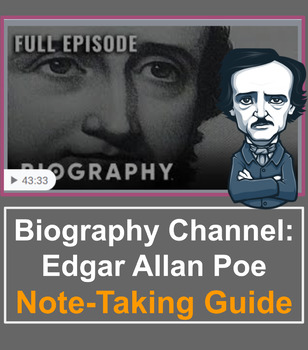
Biography Channel Video: Edgar Allan Poe

Learning Edgar Allan Poe Introductory Presentation

Edgar Allan Poe Bio Graphic Organizer

"Edgar Allan Poe : Buried Alive" Scavenger Hunt

Edgar Allan Poe Biography Questions & Answers (American Masters: Buried Alive)

Edgar Allan Poe Bundle

Helen of Troy: Practice with Poetry Comparisons

The Raven - 5 Day Unit - Edgar Allan Poe , Literary Analysis + Poem Practice
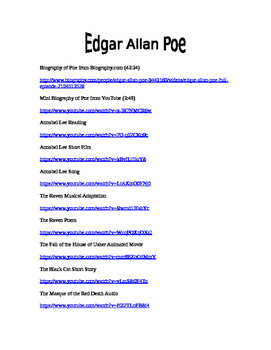
The Masque of the Red Death Resources

The Life of Edgar Allan Poe -- Fact Web Bio Notes
- We're hiring
- Help & FAQ
- Privacy policy
- Student privacy
- Terms of service
- Tell us what you think

COMMENTS
Edgar Allan Poe (born January 19, 1809, Boston, Massachusetts, U.S.—died October 7, 1849, Baltimore, Maryland) was an American short-story writer, poet, critic, and editor who is famous for his cultivation of mystery and the macabre.His tale "The Murders in the Rue Morgue" (1841) initiated the modern detective story, and the atmosphere in his tales of horror is unrivaled in American fiction.
Edgar Allan Poe (né Edgar Poe; January 19, 1809 - October 7, 1849) was an American writer, poet, author, editor, and literary critic who is best known for his poetry and short stories, particularly his tales of mystery and the macabre.He is widely regarded as a central figure of Romanticism and Gothic fiction in the United States, and of American literature.
Quick Facts. FULL NAME: Edgar Allan Poe BORN: January 19, 1809 DIED: October 7, 1849 BIRTHPLACE: Boston, Massachusetts SPOUSE: Virginia Clemm Poe (1836-1847) ASTROLOGICAL SIGN: Capricorn. Early ...
Edgar Allan Poe's stature as a major figure in world literature is primarily based on his ingenious and profound short stories, poems, and critical theories, which established a highly influential rationale for the short form in both poetry and fiction. Regarded in literary histories and handbooks as the architect of the modern short story, Poe was also the principal forerunner of the "art ...
1809 -. 1849. Read poems by this poet. Edgar Allan Poe was born on January 19, 1809, in Boston. Poe's father and mother, both professional actors, died before the poet was three years old, and John and Frances Allan raised him as a foster child in Richmond, Virginia. John Allan, a prosperous tobacco exporter, sent Poe to the best boarding ...
Edgar Allan Poe was a poet, short story writer, editor, and critic. Credited by many scholars as the inventor of the detective genre in fiction, he was a master at using elements of mystery, psychological terror, and the macabre in his writing. His most famous poem, "The Raven" (1845), combines his penchant for suspense with some of the ...
The legend of Edgar Allan Poe is far from the reality, as we learn in A & E's Biography series documentary of his life. The much misunderstood author is given a fair look in this 50 minute overview. They bring us the sad, broken Poe, stumbling through lectures and readings, but they also show us a good man who loved literature and wanted to ...
Born to a gifted actress and a less talented actor, Edgar Allan Poe (b. 1809-d. 1849) was orphaned in 1811 and taken in by the Allans of Richmond. Over time, tensions with John Allan grew, culminating with young Poe's withdrawal from the University of Virginia in 1826 for incurring gambling debts and leading to his 1827 voyage to Boston.
Edgar Allan Poe was born in Boston, USA, in 1809. Poe, short story writer, editor and critic, he is best known for his macabre tales and as the progenitor of the detective story. ... He has appeared in many Poe documentary films, including The Mystery of Edgar Allan Poe(1994) for the A&E Biography series and Eric Stange's film for the PBS ...
This biographical novel recounts the life and works of the famous American author, Edgar Allen Poe. Though Poe's life was fraught with serious troubles such as alcoholism, gambling, deliquency, etc. the author, Tom Streissguth, gently approaches these subjects for his younger audience and presents them in a fashion by which children understand the severity of the problem through the ...
The triumphant and tragic story of the great poet, short story writer , and master of the macabre. Blessed by a genius that brought him many successes as a w...
Edgar Allan Poe, an American icon, is celebrated for his life and work. This lesson will delve deeper into his early life, his macabre short stories, his poem "The Raven," and his mysterious death in Baltimore in 1849. ... Video created by Biography; Lesson Plan created by sarah markel; More from The World's People and Places. 05:20. The true ...
Description. This is a viewing guide for students to complete while watching the A&E Biography video of Edgar Allan Poe. There are also discussion questions to use after watching the documentary. An answer key for the viewing guide is included. Tip: Some students might find it fast, so I have them do their best, and then we review at the end of ...
Biography is an American documentary television series and media franchise created in the 1960s by David L. Wolper and owned by A&E Networks since 1987. Each...
Biography continues to highlight newsworthy personalities and events with compelling and surprising points-of-view, and remains the defining source for true stories from some of the most accomplished non-fiction storytellers of our time. ... By submitting your information, you agree to receive emails from A&E and A+E Networks. You can opt out ...
He also penned the first biography of Poe, which helped cement some of these misconceptions in the public's minds. While he never had financial success in his lifetime, Poe has become one of America's most enduring writers.
Edgar Allan Poe (January 19, 1809 - October 7, 1849) was an American writer, poet, editor, and literary critic. Poe is best known for his poetry and short st...
Q-Chat. Study with Quizlet and memorize flashcards containing terms like What did Poe's mother do for a living?, What happened to Poe's father?, What happened to Poe after the death of his mother? and more.
A&E Biography of Edgar Allan Poe - Viewing Guide & Discussion Questions. Created by . The ELA Duo. This is a viewing guide for students to complete while watching the A&E Biography video of Edgar Allan Poe. There are also discussion questions to use after watching the documentary. An answer key for the viewing guide is included.
Edgar Allan Poe A & E Biography. Flashcards. Learn. Test. Match. Flashcards. Learn. Test. Match. Created by. lateaciadwellingham. Terms in this set (28) Two titles Poe has been given by scholars. The Master of Suspense /Inventor of the moderate detective story /Farther of American short story.
Created by. Emma_Shannon2 Teacher. Study with Quizlet and memorize flashcards containing terms like What did Poe's mother do for a living?, What happened to Poe's father?, What happened to Poe after the death of his mother? and more.